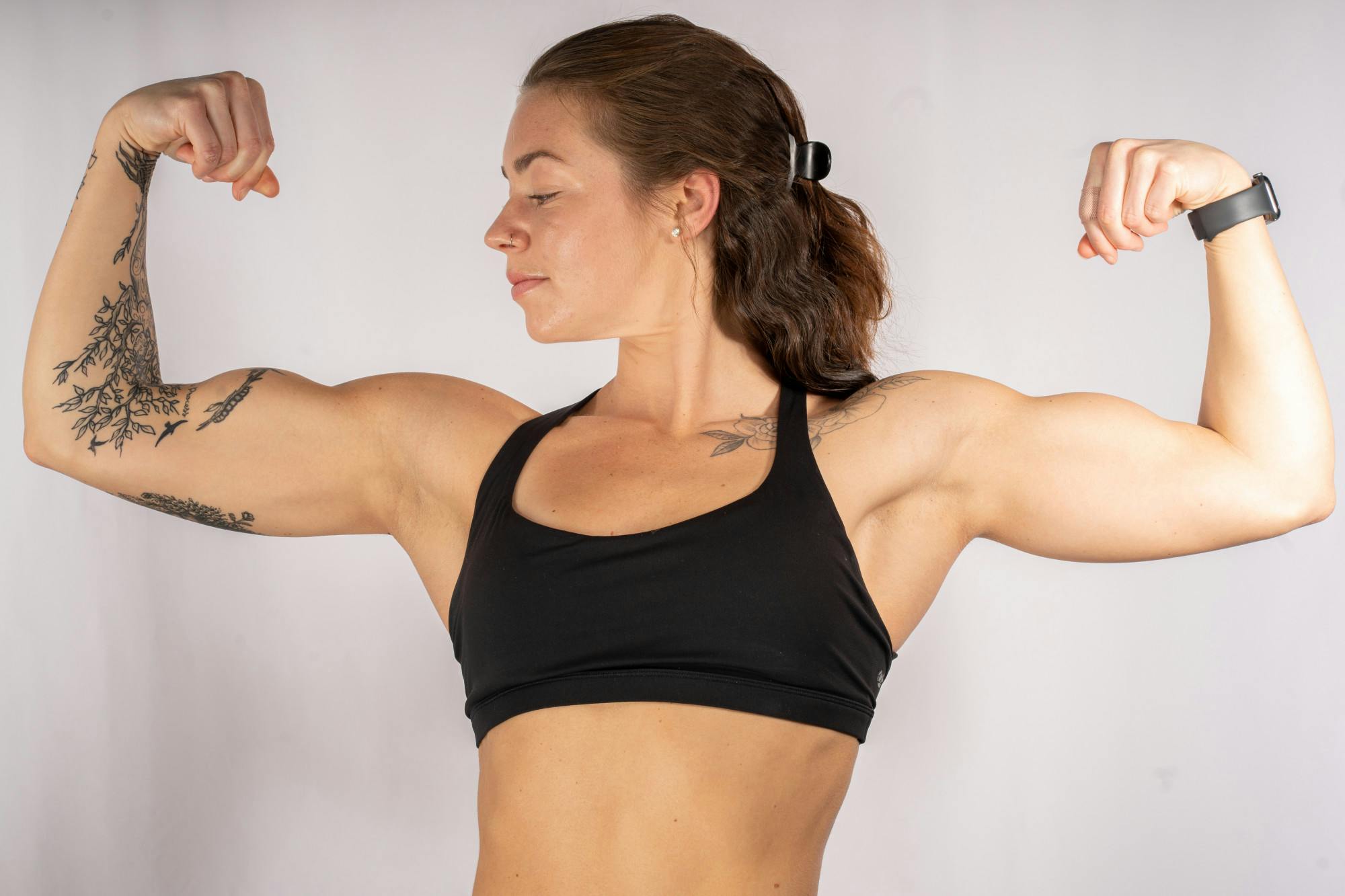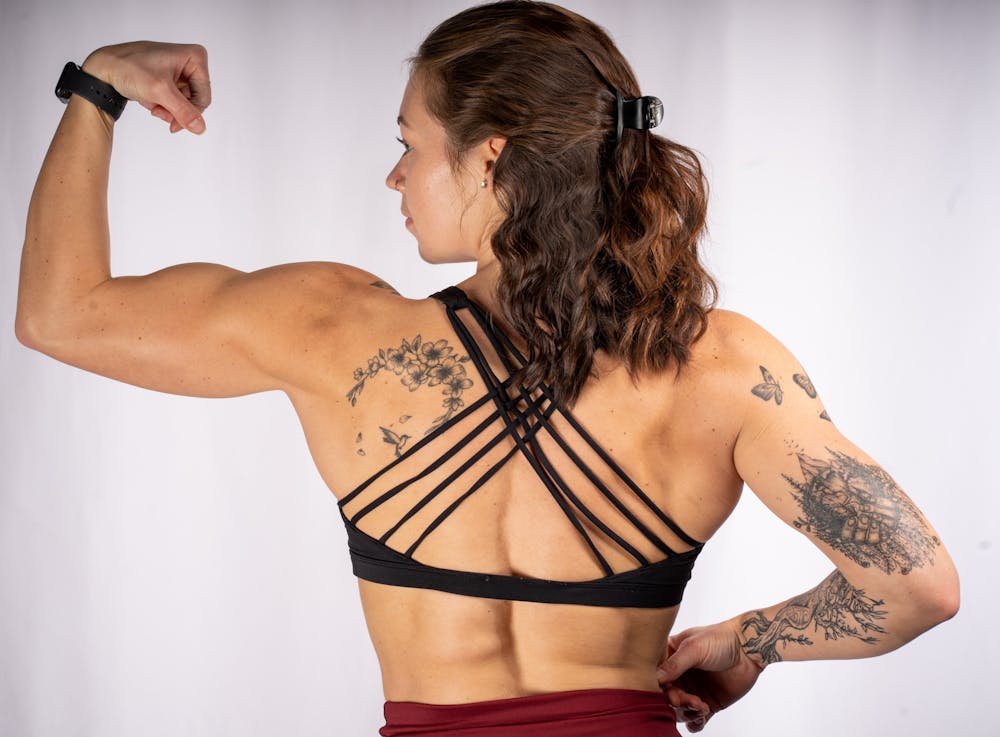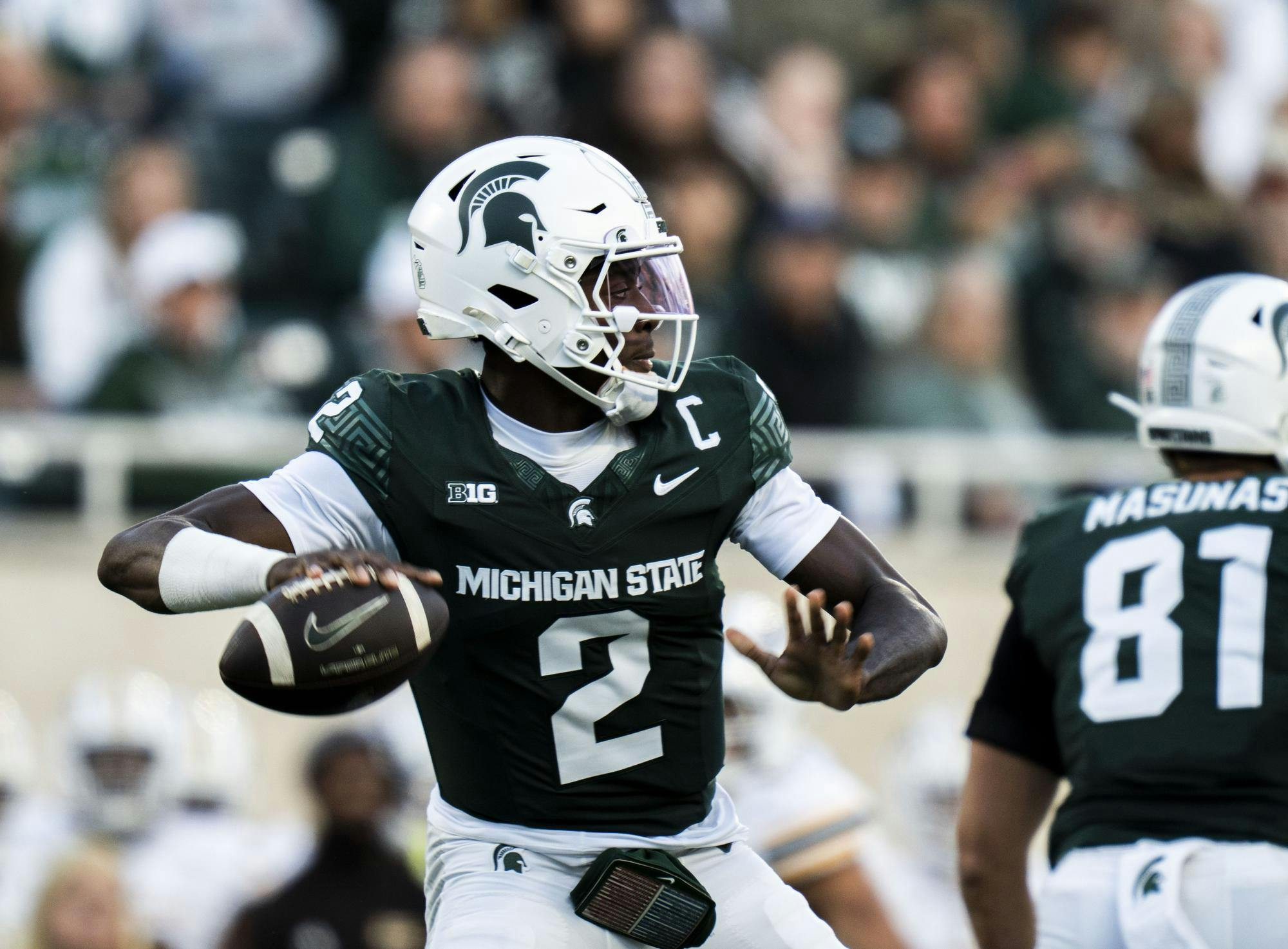Efforts to make the gym a safer place for women
Studio art sophomore Amanda Roberts and kinesiology sophomore Charly May said they have seen more women in the gym moving away from cardio and beginning to pick up free weights, but it's still far and few between.
“Say I walk into PowerHouse gym at 5 p.m.,” May said. “I’m the only girl in there and I can literally feel everyone staring at me.”
After study upon study, it's no secret that social media is prone to exacerbating beauty standards and contributing to our feelings of self-consciousness. But with the rise of fitness influencers and content online, some believe the nature of this influence is changing, and not necessarily for the better.
“I've been in the lifting community for a long time and I feel like the content that (influencers) put out isn't really anything that benefits people,” May said. “It's kind of just them glamorizing it and only showing the good parts of it.”

Last year, members of the Associated Students of Michigan State University, or ASMSU, drafted a bill that sought to put funds towards a strictly female and non-binary gym space on campus.
At the time, education junior (then sophomore) Ella Woehlke said that while female health was so important, she always felt uncomfortable in a “male-dominated” space such as the gym. Her ideal gym vision included fewer mirrors on the walls and, instead, more encouraging quotes.
Political science-prelaw freshman Alex Seidleck said at the time, that she has had several uncomfortable encounters that discourage her from working out in a gym. If she had a safer space, she would work out more often, she said. Promoting accessibility to physical health is the purpose of gyms, but they fall short when women want to get strong safely.
“I have no issue walking in there and acknowledging that I'm the only girl and that I'm gonna turn some heads,” May said. “But … as a beginner, I think that that can be extremely daunting to a lot of women.”
May said a more informative, beginner-friendly environment might excite more women and allow them to feel more comfortable. So many people, she said, walk into the gym and don’t know where to start.
Instead of feeling supported to start their journey, they quit before they can even begin.
“Don’t get too big.”
May is determined to compete in a bodybuilding competition someday.
She lifts weights five days a week and regularly tracks her macronutrients. Above all else, the lifestyle associated with weight lifting is something that makes her feel her best, both mentally and physically.
The beauty standard, she said, is shifting away from the stereotypical quest to be as thin as possible.
But while weightlifting becomes more of a trend, May said, what women actually want to look like becomes a gray area. Just because beauty standards are shifting doesn’t mean that things are perfect — not by a long shot.
Support student media! Please consider donating to The State News and help fund the future of journalism.

May describes herself as having a "bulkier" muscle build, something she faces difficulties for.
“I've had a lot of girls reach out to me in the past and be like … ‘I don't really want to look like you,’” May said. “I've heard that probably like 50 times in my life. There's a huge stigma behind the fact that lifting will make you bulky.”
Roberts said that more content online nowadays, particularly on TikTok, promotes being muscular. However, there is still a long way to go in the way of equal representation for women who lift.
“I feel like for women, there aren't a lot of super muscular, big influencers out there to show that it's okay … to have nice, big muscles,” Roberts said. “It's mostly just being thin and petite and not taking up a whole lot of space.”
Despite online fitness content intending to be seen as "motivating", studies show young people who regularly view health or fitness content online are more likely to have an eating disorder.
One study forces readers to consider the format of Instagram — an image-dominant platform where users interact with content largely because of how visually pleasing it is. It is not a text-based platform; there is less emphasis on what the poster says and more on what the image shows us.
Therefore, it’s easy for “wellness” posts, not often based on scientific evidence or the advice of a professional, to win a nod of approval strictly based on what users see – which might be a toned stomach, a vibrant nutrition infographic or copious plates full of nothing but chicken and rice.
Finding Balance
Roberts chooses to never look at the number on the scale.
She goes to the gym three to five times a week. She tracks her calories to make sure that she intakes enough protein but does not follow a strict diet. Her overall goal is to “be stronger,” something she said she measures by how she feels rather than her reflection in the mirror.
“#food” is the 25th most popular hashtag on Instagram, and “#fitness” clocks in at 30th. Photos of perceived “healthy” food, however, garner the most popularity when posted with this tag. Studies show that 42% of consumers use social media to gather advice about what they’re eating.
Instagram use is also shown to be associated with a greater tendency to exhibit orthorexic behaviors.
The National Eating Disorder Association defines Orthorexia Nervosa as an “obsession with proper or ‘healthful’ eating." Individuals who engage in orthorexic behaviors may compulsively check nutritional labels, cut out entire food groups in the name of wellness or show distress when their “safe” food options are unavailable. They also might obsessively follow the advice of ‘health’ blogs on social media.
The more people post about this kind of lifestyle, May said, the more toxic it becomes. For herself, being healthy is about balance, and this can look very different for people.
“There's not one definition of (being healthy),” May said. “Personally for me, living a healthy lifestyle is me mentally being happy and satisfied with myself and physically feeling good. I don't necessarily go by the number on the scale or if I'm eating clean however many days in a row ... it's about balance.”



